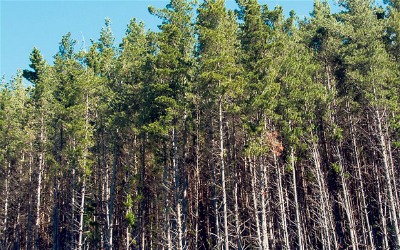People driving through forests seeing various types of timber harvests tend to focus on the effect on the landscape. Frequently, they view a harvested forest as no longer there—it was cut down. Unless the land was converted to a new use, foresters usually see something different. They see a forest set back to an earlier stage of succession—a young forest rather than a forest lost forever.

Most foresters view timber harvests and other stand treatments in the context of a silvicultural system. The term silviculture derives from the Latin root for forest (“silva”); hence, silviculture is the “culture of forests.” Silviculture includes any practice used to reach some forest management objective, such as harvesting, planting, fertilizing, and thinning. Silviculture is not fundamentally about producing wood products—it is about growing forests. Managing forests for understory plants, wildlife, recreation, or snow retention requires silviculture every bit as much as managing forests for wood products does.
A silvicultural system is a specific set of practices designed to create favorable growing conditions for the types of stands a forest owner wishes to perpetuate, based on a solid understanding of forest ecology. The management unit for a silvicultural system is the stand. A stand is a contiguous group of trees that are similar enough in age, structure, or other forest characteristics to be distinguished from the surrounding forest and managed as a unit. A stand can be anywhere from 5 acres to 100 acres or larger.
The following articles provide more information about forest management and silvicultural systems:
- Even-Aged Silvicultural Systems
- Uneven-Aged Silvicultural Systems
- Choosing Among the Various Silvicultural Systems
- Consulting a Forester
Contributor
Chris Schnepf, University of Idaho
For More Information
Logging “Selectively”: A Practical Pocket Guide to Partial Timber Harvesting. PNW 534. University of Idaho Extension, Moscow, ID. 96 pp.
The Dictionary of Forestry. 1998. Society of American Foresters, Bethesda, US (MD). 210 p. http://www.dictionaryofforestry.org/
Thinning: An Important Timber Management Tool. PNW 184. Oregon State University Extension Service, Corvallis, OR. 8p.
Smith, D.M., B.C. Larson, M.J. Kelty and M.S. Ashton. 1996. The Practice of Silviculture: Applied Forest Ecology, 9th Edition. John Wiley & Sons Inc. 560 p.
